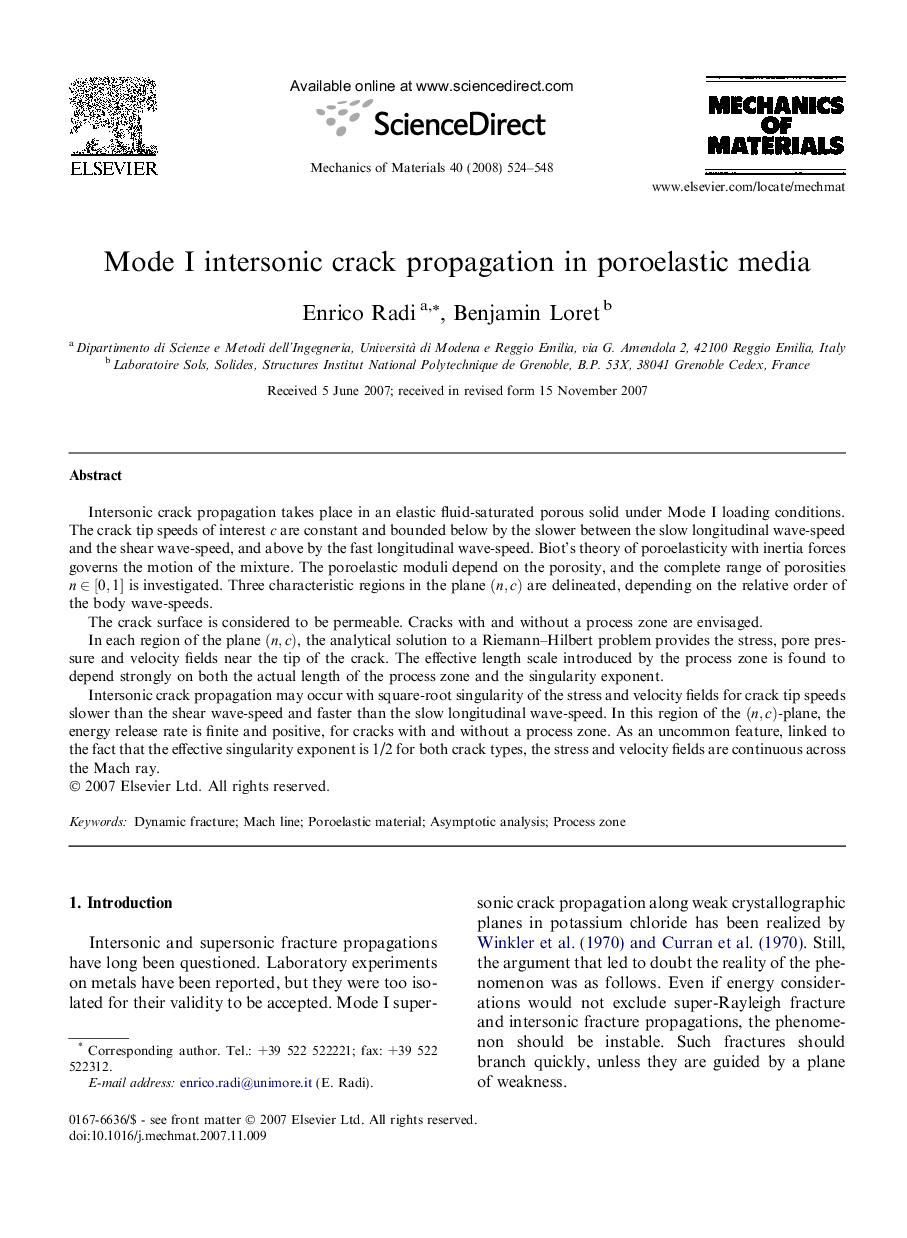| Article ID | Journal | Published Year | Pages | File Type |
|---|---|---|---|---|
| 801001 | Mechanics of Materials | 2008 | 25 Pages |
Intersonic crack propagation takes place in an elastic fluid-saturated porous solid under Mode I loading conditions. The crack tip speeds of interest c are constant and bounded below by the slower between the slow longitudinal wave-speed and the shear wave-speed, and above by the fast longitudinal wave-speed. Biot’s theory of poroelasticity with inertia forces governs the motion of the mixture. The poroelastic moduli depend on the porosity, and the complete range of porosities n∈[0,1]n∈[0,1] is investigated. Three characteristic regions in the plane (n,c)(n,c) are delineated, depending on the relative order of the body wave-speeds.The crack surface is considered to be permeable. Cracks with and without a process zone are envisaged.In each region of the plane (n,c)(n,c), the analytical solution to a Riemann–Hilbert problem provides the stress, pore pressure and velocity fields near the tip of the crack. The effective length scale introduced by the process zone is found to depend strongly on both the actual length of the process zone and the singularity exponent.Intersonic crack propagation may occur with square-root singularity of the stress and velocity fields for crack tip speeds slower than the shear wave-speed and faster than the slow longitudinal wave-speed. In this region of the (n,c)(n,c)-plane, the energy release rate is finite and positive, for cracks with and without a process zone. As an uncommon feature, linked to the fact that the effective singularity exponent is 1/2 for both crack types, the stress and velocity fields are continuous across the Mach ray.
